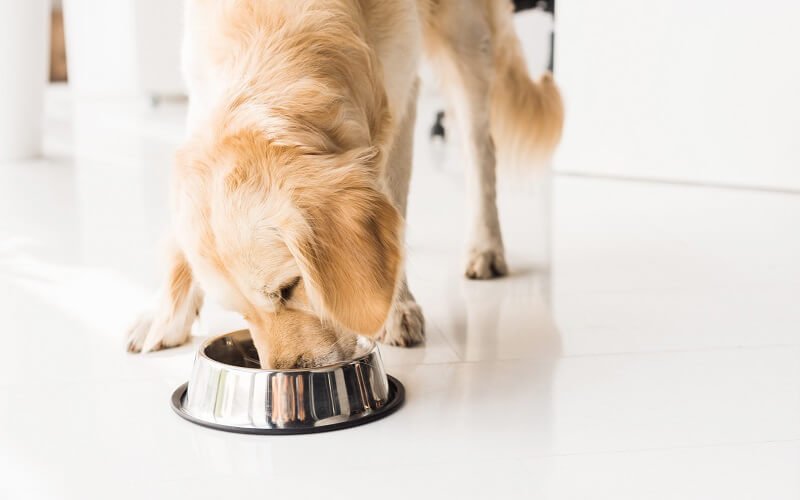Your Pet's Gut Microbiome
April 8, 2020

Published: April 2020 | Updated: March 2023
Key Takeaways:
-
Your pet’s gut microbiome is a crucial ecosystem of microbes that governs how he or she responds to stress from changing environments and routines or exposure to disease-causing agents such as kennel cough and canine influenza at the dog park, feline upper respiratory infections at the shelter, or those introduced by fleas and ticks.
-
Your pet’s digestion is greatly affected by the microbes living in his or her gastrointestinal tract. Disruptions in your pet’s gut microbiome upend more than just digestion; they can compromise immunity and create autoimmune issues, along with causing weight loss, skin problems, allergies, and even cancers or behavior problems.
- With the many pet vitamin and supplement options, be sure to prioritize your pet’s healthy gut bacteria by using probiotics for cats and dogs. Everything else will fall into line.
These days it’s nearly impossible to turn on our televisions, scroll Facebook or Instagram, walk through a grocery store, or even open our email without encountering a message about the importance of our gut microbiome.
We know it has something to do with the “bugs,” or microbes, in our gut. And we might be familiar with good (and bad!) gut bacteria from talking with our physicians, how certain foods are helpful for those bugs and others aren’t, and how antibiotics can knock them all out. But our understanding might be a little murkier when we’re talking about our pets, whose guts are a little shorter and work a little differently than ours.
I Keep Hearing About My Pet’s Gut Microbiome, But I Have No Idea What it Means.
The word microbiome need not be intimidating. Just think of it as an ecosystem of microorganisms living on or in the body. Your microbiomes—whether you’re talking about the one in your gut, your lungs, or on your skin surface, for instance—are going to be much more like your neighbor’s microbiome than your dog’s or cat’s. But even within one species there is microbiome variation.
“We know that animals are different based on where they live, what they eat, what they do, and on how old they are—there’s up to 10% variation between members of the species,” says Dr. Rob Franklin, FullBucket co-founder.
“The intestinal microbiome is really the broadest term that we can use to define all of the microbes and their genes (what they are programmed to do) in the GI tract,” says Franklin.
He notes that the inhabitants are a veritable “who’s who” of bacteria, protozoa, fungi, and viruses. These things aren’t just inertly living in there, they’re doing stuff: They’re digesting food, they’re signaling different parts of the immune system, and they’re dealing with pathogens, which is a fancy word for disease-causing organisms.
Indeed, the gut microbiota are making things happen and governing how our pets respond to situations such as stress from new environments (whether he’s just home from the shelter or you’ve just introduced another new pet to your home), changing routines (such as when you travel), exposure to infectious agents at the dog park, or time spent under general anesthesia—situations that can cause a variety of gastrointestinal issues.
This is a big shift in thinking for small animal internists and surgeons alike, says Dr. Keith Latson, FullBucket’s other co-founder. “To think that all of the situations that we’ve treated symptomatically over the years—whether it’s inflammation or infection, diarrhea, any of those things— could directly contribute or be contributed to by the microbiome is mind-blowing.”
How to Improve the Gut Microbiome
What’s changed the veterinarian’s understanding of the microbiome’s importance? Scientists have mapped various species’ genomes over the past few decades and studies have shown how factors in individuals’ lives “turn on” or “turn off” different genes in the body, in different situations, leading to variations in everything from what color eyes they have to how they respond to different environmental toxins or pathogens.
“The same thing is happening now with the microbiome,” says Franklin.
For example, when once vets might have merely speculated about a mysterious digestive upset’s cause—attributing it to a change in environment, companion, or food, for instance, says Latson—they now know such events do cause measurable stress on and shifts in the population of microorganisms in the gut, their overall balance, and how they interact with each other. Essentially, these events turn genes on and off, and the gut responds with symptoms like inflammation, stasis (inactivity), and ulcers and other pathology.
While things can be easily upended, and you can try to avoid those situations for your pet as best you can, the FullBucket team says you can be proactive about stabilizing and then maintaining the gut microbiome so it is ready for any such insults.
“What we’re doing in the food bowl has a tremendous effect on the overall health of the animal,” Franklin says.
“This is something that applies across all animals, across all cases, and I think the opportunity to really harness that as we go forward is exciting,” he adds.
What Do Bacteria Do in a Healthy Gut Microbiome?
To wrap your head around the strength of a healthy microbiome, you must understand your pet’s GI tract.
Dogs and cats, like humans, are primarily enzymatic digesters, which means enzymes in our GI tracts unlock the simple sugars, proteins, and fats in our diets and the small intestine absorbs them into the bloodstream to use as energy.
When our pets head to the feed dish to chow down, they pick up and begin chewing food, where enzymes in the saliva begin breaking it down in the mouth.
They swallow the food, which travels down a relatively short esophagus to the stomach. After some additional breakdown by acids and enzymes in the stomach, the ingesta moves on to the small intestine, where pancreatic enzymes and bile (released by the liver and stored in the gallbladder) digest sugar, starch, protein, fat, fat-soluble vitamins, calcium, and phosphorus, and it gets absorbed through the intestinal wall into the bloodstream.
The cecum, large intestine (colon), and everything behind it is considered the hindgut. While some species—think big plant eaters such as horses and rabbits—rely on the cecum for crucial fermentation of cellulose, this comma-shaped structure is much smaller and not as important a player in pets’ GI tracts.
Next up, bacteria, fungi, and protozoa (all players in the gut microbiome) in the large intestine break down fiber and produce volatile fatty acids, which are released into the bloodstream for energy. The large intestine also absorbs water and forms feces.
Gut disturbances occur when that system and its microbiome are not operating properly.
How to Balance Your Pet’s Gut Health
Now that we know disease is a downstream effect of microbiome-related problems, it puts veterinarians, who often serve as “firefighters” in their daily practice, says Latson, in a better position to stave off issues altogether.
Here’s how: Researchers are building gut microbiome libraries using fecal samples from thousands of pets. As the libraries are built, population scientists and epidemiologists—who investigate the reasons why disease occurs within populations (in this case, dogs and cats)—and their computers can determine what specific variations in the microbiome create risk for certain health problems.
“Now we’re starting to talk about preventative medicine, not reactive medicine,” Latson says. “That’s exciting.”
“The scientific community has realized they’re pioneers on the front end of a huge discovery and it’s ratcheting up the ladder of importance in the industry very fast,” says Robo Hendrickson, FullBucket’s third co-founder, noting that some studies even show that caring for the microbiome could remove the need for antibiotics in certain cases.
Aiming for gut health and balance used to involve a whole lot of art along with science, but as microbiome research progresses, innovators in the animal health industry, like the FullBucket team, are equipping veterinarians with the correct prebiotic and probiotic supplements to effect real change in their patients.
“These aren’t just extra vitamins so we can feel good,” says Franklin. “No, we’re talking about big-picture health. We know that if we protect and keep the microbiome healthy, everything else falls in line to help protect our furry loved ones from the pathogens that surround them at all times.”
“Pet owners need to remember that what they’re putting into their dog or cat’s food bowl could be the most important choice they make today,” adds Hendrickson.
→Highly Recommended: The veterinary-recommended, scientifically-proven supplements designed to help improve your dog and cat’s gut microbiome←

